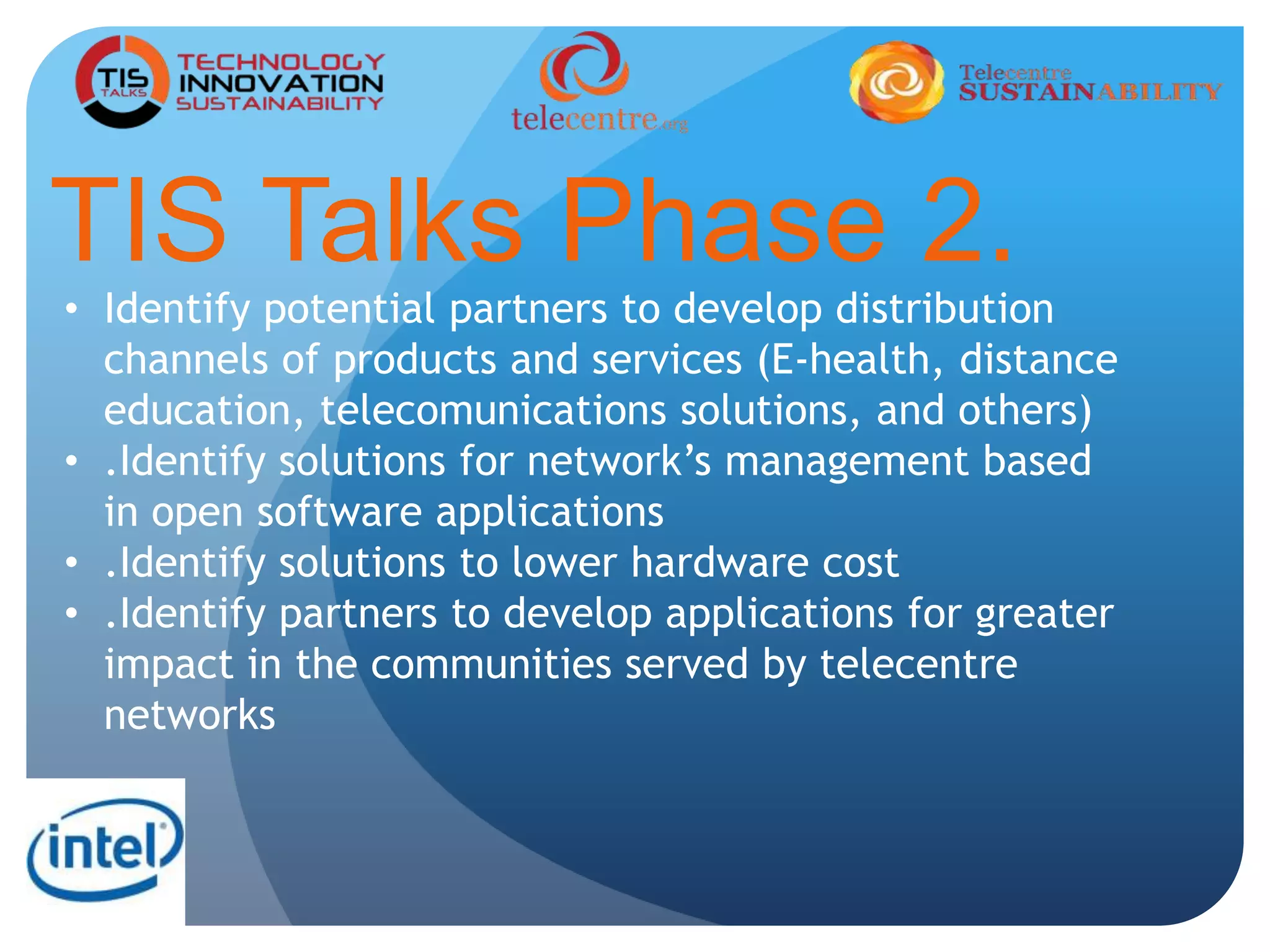The document discusses the sustainability and development of telecentres within the ICT4D (Information and Communication Technology for Development) movement, highlighting trends, challenges, and opportunities for innovation. It underscores the systemic approach to telecentre sustainability, emphasizing the importance of networking, collaboration, and the human capital over mere infrastructure. The text also invites participants to engage in ongoing discussions and initiatives geared towards enhancing telecentre services and impacts within their communities.






































